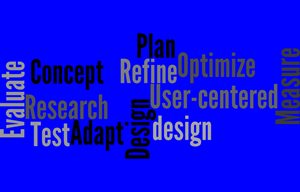
What happens next in ACQUIRE-HF?
The ACQUIRE-HF project has now officially been launched, which was marked by the kick-off meeting the 22nd of October. We would like to inform you about the next steps in the project before patient recruitment starts for the large randomized controlled trial in September 2016.
In September 2015, we began the inclusion to the pilot study, which will test a reduced version of the final ACQUIRE-HF platform. This is done in collaboration with Professor Kenneth Egstrup and the heart failures nurses at Svendborg Hospital. The aim of the pilot study is to collect experiences from the users – both patients and health care professionals – in order to optimize the platform to be used in the final ACQUIRE-HF intervention.
Professor Kenneth Egstrup, heart failure specialist, from Svendborg Hospital and the heart failure nurses relate their experiences with the pilot study so far:
“The Department of Cardiology at Svendborg Hospital has agreed to participate in the pilot test of the ACQUIRE-HF platform for patients with heart failure. The platform is based on CGI’s CC360 (Community Care 360°). After having some initial difficulties in accessing the platform due to the hospital’s firewall, we have now started the inclusion of the first patients. The patients can choose to either use their own computers or to borrow an Ipad that CGI procured via Apple for the project.
Our first experience is that the users must have some computer knowledge, as we otherwise have to spend considerable resources on training them to utilize the computer and platform. The heart failure patient is often times an elderly citizen whose potential lack of fine motor skills can be a challenge in using the Ipad correctly in the way the platform is designed now. If a patient is unfamiliar with a tablet device, merely pressing correctly on the screen might be a major issue.
For the heart failure nurses, some work routines are cumbersome because they have to log in and out of several systems when the treatment plan is being setup, and this process is time consuming. At the moment we are testing different work routines in order to be completely ready when the patient is meeting in for their platform introduction”.


From November 2015 to April 2016, experts from the Unit of User Perspectives at University of Southern Denmark will perform workshops with expert panels consisting of patients with heart failure, nurses, physicians and IT-experts. This constellation is called participatory design, whereby the end users are included in the development of the final ACQUIRE-HF platform which will be evaluated in the randomized trial. We will be using the MUST approach (Method for examination of System development and Theory hereof), which has been created to aid in the development and implementation of IT-tools in order to enhance that these tool are sustainable and meaningful to the end users. The workshops will be mutually interacting (called prototype laboratories), which includes presentation, hands-on experience and discussions of the different parts of the platform. Health care professionals from all the collaborating hospitals will be participating in order to secure an optimal implementation and anchoring when the project will begin. Further information is available via Birgitte Nørgaard, binorgaard@health.sdu.dk.
A team from the Department of Psychology at SDU will develop a number of questionnaires for the randomized trial together with heart failure patients and heart failure specialists / nurses using focus group interviews. These questionnaires will assess “patient empowerment” and patients’ and health care professionals’ satisfaction with the platform.
In January 2016, the first steering committee meeting is being held, where a representative of each of the collaborating hospitals will be present. During the meeting the protocol and other relevant documents will be reviewed, the intervention will be discussed, etc., in order to ensure that the protocol can be submitted to the Ethics Committee soon thereafter.
Thus, there are a lot of project activities going on simultaneously in order to be ready for the inclusion of the first patients in September 2016